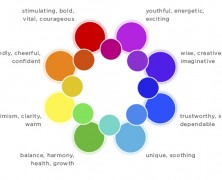“LIGHT reveals the glories of the external world and yet is the most glorious of them all. It gives beauty, reveals beauty and is itself most beautiful. It is the analyzer, the truth-teller and the exposer of shams, for it shows things as they are.” Edwin D. Babbitt, Principles of Light and Color While interior design plans give plenty of attention to wall paint and floor colors, lighting plays a critical role that is too often overlooked. Color and lighting influence our psychological functioning and well-being on a day-to-day basis, and understanding these influences is important when creating “human-centric” spaces. Designers have been using advanced color knowledge in this way for years, and the customizability of LED lighting now allows them to do the same with light. Let’s take a closer look at LEDs and the psychology of light and color. Humanity’s fascination with color has been with us since the dawn of civilization, with different colors used to symbolize and express various moods in ancient artwork spanning from Greece to Tibet. Color theory can be somewhat subjective, as certain colors elicit varying reactions in individuals based on personal preference and cultural backgrounds. It’s a truly interesting scientific field, and a great deal of thought has gone into exploring the psychological effects of color. One way of comparing colors in the visible spectrum is to divide them into “warm” and “cool” categories. The warm colors include red, orange, and yellow—think of the sun setting on the beach, or maple leaves strewn across the yard in early fall. These colors generally convey passion, positive energy, enthusiasm and happiness. In contrast, the cool colors include green, blue and purple—think of a solitary walk on a full moon night, or the depth of the ocean sea beneath a sleeping fisherman’s boat. Those colors convey...






